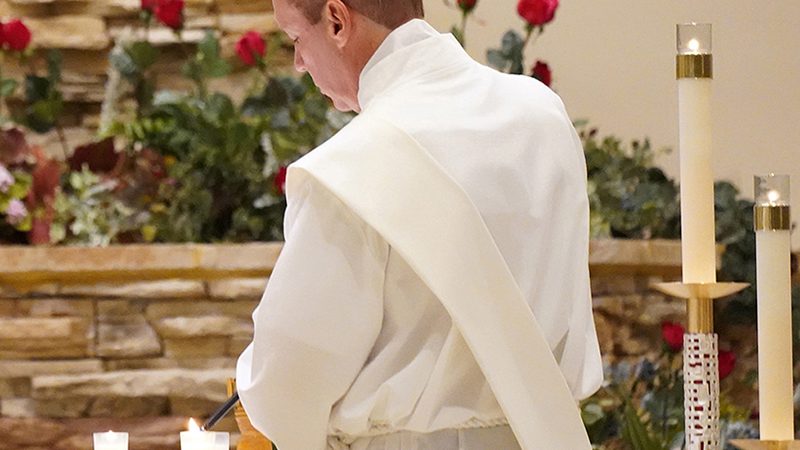New Book Analyzes Diaconal Identity
O’Donnell examines the role of a deacon in the ‘threshold dimension of the Church’
Deacon Greg Kandra Comments Off on New Book Analyzes Diaconal Identity
 Picking up Deacon Tim O’Donnell’s new book, “The Deacon: Icon of Christ the Servant, Minister of the Threshold” (Paulist Press, $29.95), I had to wonder: “Does the world need another overview of the diaconate?” The answer, to my pleasant surprise, is “yes.” Deacon O’Donnell, from the Archdiocese of Boston, has crafted a book that manages to be scholarly, engaging and, even, surprising.
Picking up Deacon Tim O’Donnell’s new book, “The Deacon: Icon of Christ the Servant, Minister of the Threshold” (Paulist Press, $29.95), I had to wonder: “Does the world need another overview of the diaconate?” The answer, to my pleasant surprise, is “yes.” Deacon O’Donnell, from the Archdiocese of Boston, has crafted a book that manages to be scholarly, engaging and, even, surprising.
Early on, he makes clear he is aiming for two distinct readers. “One group is committed to the theological disciplines,” he writes. “The second set of readers has a more practical focus. They include deacons practicing ministry or anyone discerning a call to the office, or those in formation for ordination.” I think both sets of readers are well-served in “The Deacon.” Readers will find abundant history — including a comprehensive unpacking of what took place at the Second Vatican Council — and a well-researched and well-reasoned analysis of diaconal identity, notably the idea of deacon as “minister of the threshold.”
Deacon O’Donnell relates this to the “threshold dimension of the Church.” A ministry of the threshold, he notes, is a ministry “to the margins of the church community,” including those unable (or, perhaps, reluctant) to attend Mass and those who feel quite literally marginalized.
As he describes it, this involves ministering at “the threshold between sanctuary and worshippers, the church and the world, divine and human realities. … The ministry of the threshold has a two-way movement: out from the Church as the bearer of the Gospel, back to the Church with an invitation to the Eucharistic banquet and to life in God.”
The notion of “minister of the threshold” is fascinating, and Deacon O’Donnell makes a compelling case for this as a vitally important diaconal model. He shows beautifully how it relates, as well, to the deacon’s fundamental calling to conform himself to Christ the Servant — who was, himself, a “minister of the threshold.”
Toward the end, the author probes the challenge of “two diaconates” — transitional and permanent — and offers a modest proposal of either abolishing the former (as Paul VI did with minor orders) or perhaps re-imagining the transitional diaconate to focus more on acts of charity, ministering to those on the margins. Deacon O’Donnell also peers into the future to warn about “the danger of deacons devolving into local mini-pastors.” With more deacons filling functions formerly carried out by priests, this is not a minor concern.
Ultimately, Deacon O’Donnell offers us this bracing conclusion: “There is no threshold mission in Christ which is not an expression of servanthood, and no servanthood in Christ which does not stretch over the threshold to invite us to share in God’s life.” Standing by the threshold, the deacon is there to welcome, initiate, reach out and reach beyond — all in service of the Gospel.
This book has a wealth of wisdom to offer deacons, aspirants, candidates, those involved in formation and anyone curious to know more about the diaconate. You will come away from it enlightened and, I think, inspired.
Not only that: You may never look at the Church threshold the same way.
Yes, the world needed this fresh overview of the diaconate. I’m grateful to Deacon Tim O’Donnell for giving it to us!
DEACON GREG KANDRA is the creator of The Deacon’s Bench blog and is the multimedia editor for Catholic Near East Welfare Association (CNEWA).





